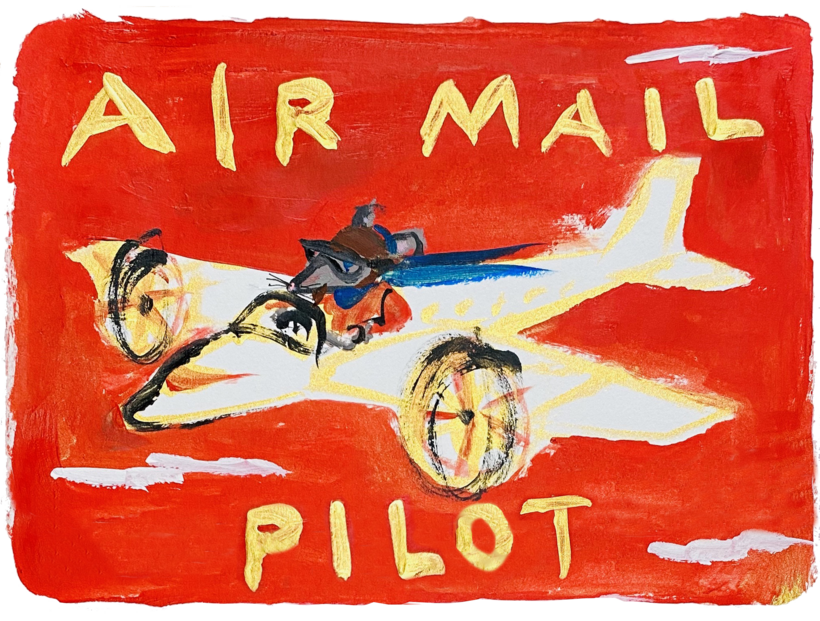On a Wing and a Prayer

When Elizabeth Cook entered her first pigeon race last year, her father hoped her birds would not finish too far behind his so she would not get disheartened.
Waiting anxiously at home, they saw two birds overhead and watched as one peeled off and dived — towards Elizabeth’s loft. “I shouted and screamed so much that I scared mine off and it wouldn’t come down for 25 minutes,” James Cook, 41, said. His bird came fourth when it should have been second. Elizabeth’s had won.
She won three of the next five races held in Devon and Cornwall during the season, with a different bird. Now nine, Elizabeth is being hailed as a future national champion after beating several former title-holders and being ranked first overall at the Bude Pigeon Racing Club. She was named best junior racer for the Devon and Cornwall region of the Royal Pigeon Racing Association and ended up 29th out of more than 500 racers in the region.

She feeds and trains her birds before and after school. Choices of diet and exercise can make all the difference. Her father and her grandfather, Derek, 83, both race pigeons from Tumley Lofts Stud, their pigeon breeding business in the village of Beaworthy.
Elizabeth’s first win was a 90-mile club contest and she named the victor Purbeck Dash, in honour of the race, before retiring it because she did not want it to get hurt or lost. She then won three races in a row with a bird that she named Triple B because all the race locations began with B.
“Sometimes I feel worried that they are not going to come back because I like all of them lots, but I am excited to see if they win,” she said. Her father tries to guide her, but she makes the decisions on her flock. “She is already a high flier and a potential future national champion,” he said.
Come to Llama

Monkey Business

They are man’s closest relatives but until now it has mainly been a mystery how they communicate. Now scientists believe they may have cracked the secret language of chimpanzees by decoding 80 distinctive gestures. In the body movements, raising an arm means ‘Come here’ and a quick scratch is the sign for ‘Let’s go’.
Around 99 per cent of chimp DNA is the same as that of humans. UK primatologist Dr Cat Hobaiter, 39, has spent 13 years studying chimpanzees in Uganda and is thought to be the first person to fully understand the meaning of their gestures. In chimp language, a touch and kiss can mean ‘Let’s be friends’ while rolling over indicates ‘Let’s play’ and a raised rear foot signifies ‘Climb on board’.
Scientists believe they may have cracked the secret language of chimpanzees.
Dr Hobaiter, who appears in the series Primates on BBC1, told the Mail: ‘Gestures – like words – can have more than one meaning and can be combined with other gestures. The combination of two gestures – for instance the arm raise [which means come closer/come here] and other gestures [arm scratches] mean ‘Let’s travel’. She added: ‘In the programme we see a mum asking her son to come down a tree to travel and because her son is far away the mum is likely saying ‘Come here, so we can travel’.’ Dr Hobaiter, who lectures at St Andrews University for six months of the year, said the hardest gesture to decode was ‘Stop’.

She explained: ‘Some of the gestures mean ‘Stop that!’. Saying ‘Stop’ is a really hard one for us to decode because the signaller could be asking the recipient to stop doing all sorts of things. ‘There’s so much variation there in the behaviour that it actually took us a while to work out what was going on.
‘Chimps actually have quite a few different gestures which they all use to say ‘stop’.’ The expert said: ‘Maybe you need to be a bit more polite about it if you’re saying it to the alpha male than if you’re saying it to your brother or sister. Basically we’re looking for patterns – we’re looking for the same thing happening over and over. And if you have little bits of variation in there then that pattern just takes a lot longer to see.’
Dr Hobaiter said she was going to look into different ape groups across Africa, including gorillas, to work out if there is any ‘analogy to other accents or other dialects’.

